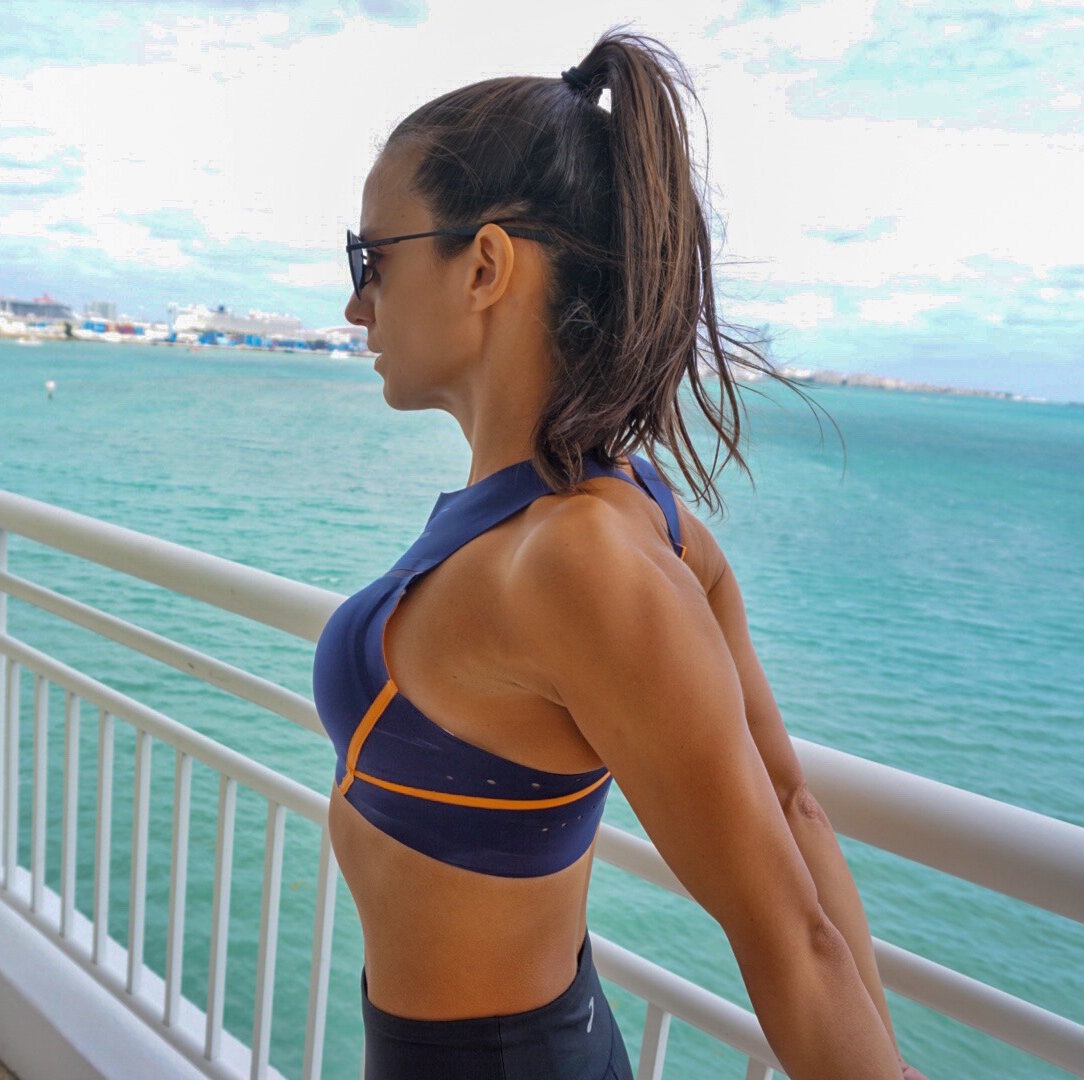Sponsored by Zappos. All opinions are my own.
When it comes to running, all details matter. We spend so much time researching and looking for the right shoes for the sport, but forget that the rest of what we wear makes an impact on our performance as well. When I first started out as a runner, I dressed in whatever I normally wore to the gym—spandex leggings and cotton tops was typical. I dealt with my fair share of chafing all over the place, but it took me a while to understand that it wasn’t just the act of running that was causing this issue, it was actually the material and types of clothes I was wearing on every single run. Cotton definitely should not be a part of any running apparel!
Most people who follow my journey will notice I have been wearing the same style of sports bras for years. I tend to stick to what I know and what has ‘somewhat’ worked for me, but end up missing out on the new and better options that come out on the market. I was lucky to try out one of the styles from Brooks new Dare Run Bra collection from Zappos, where you can find the entire line plus a long list of so many other products. Being a Zappos Rewards member means I get free expedited shipping (one business day!), free returns for a year, and the best customer service. It doesn’t get any better than what Zappos offers!
Backed by Research
When designing the Dare collection, Brooks partnered up with research teams and runners to test sports bra features on the many cups sizes, not just the standard size as most brands do. The conclusion was that bras made for running should be designed very differently than the regular sports bras out there. Running is a high impact sport and requires extra support to withstand constant and intense movement, as well as extra protection against excessive moisture. Promoting breast health was a top priority for the Brooks team when creating the Dare collection.
The Test
My first impression of the Brooks Dare High Neck Run Bra was how lightweight the material felt. I chose to try this cropped style since it had a bit more coverage than most other bras, which tends to be more comfortable to wear for my body type. I was a little skeptical to run with a bra that was almost entirely seamless, like this one, since it felt as if it wouldn’t support and hold things in place as much. My first in-motion impression of the High Neck Run Bra was the compete opposite—the lack of seams made the bra feel even more lightweight than I thought and since the material was pretty compressive, it felt just as supportive, if not more, than the bras I normally wear.
As I mentioned, I’ve had a long history with chafing from sports bras. I don’t know if it’s because my skin is super sensitive or I really just don’t wear the right type of bras for distance running! The worst of it happens during long runs and racing since it’s when I’m sweating the most. I finished the 2018 Boston Marathon, which was a torrential downpour the entire time with an almost-down-to-the bone, quarter dollar-sized open wound along the seam of my bra. It was the worst pain for days and I still have a scar from it! I normally get chafing even on 90-minute runs, but I ran a 12-miler with the Brooks Run Bra and I finished with ZERO chafing! That definitely marks a big checkmark for a good sports bra in my book!
The back and sides of the High Neck Run Bra has tiny holes, or perforations as it’s called in the details, that I thought was just for added design, but they actually serve a purpose. They are placed strategically to promote airflow so that your skin can stay dry—another aide to the anti-chafing benefits. During my runs I think this helped the bra move with my skin much better than if excess sweat got in the way and made the material stick. Many bras these days are made with cup inserts to add that extra padding and/or support for bigger cup sizes, but they tend to get tangled when you wash or just fall right out. The padding in this Brooks Run Bra has a unicup design, so it doesn’t shift around during runs and definitely made a noticeable difference for me as far as comfort.
Overall my opinion is Brooks did an amazing job paying attention to the details that matter for women runners. For me, the most important details I look for are anti-chafing properties, compression, and style, and the High Neck Run Bra fit all. The rest of the collection is designed just like this style, so I am looking forward to adding the others to my wardrobe! Combined with the perfectly comfortable Greenlight Tights and Glycerin 18, I felt unstoppable! Brooks running gear is made with detail and performance in mind and can all be found at Zappos. Don’t forget to sign up for the Rewards program to reap the many benefits and always top-notch shopping experience!









